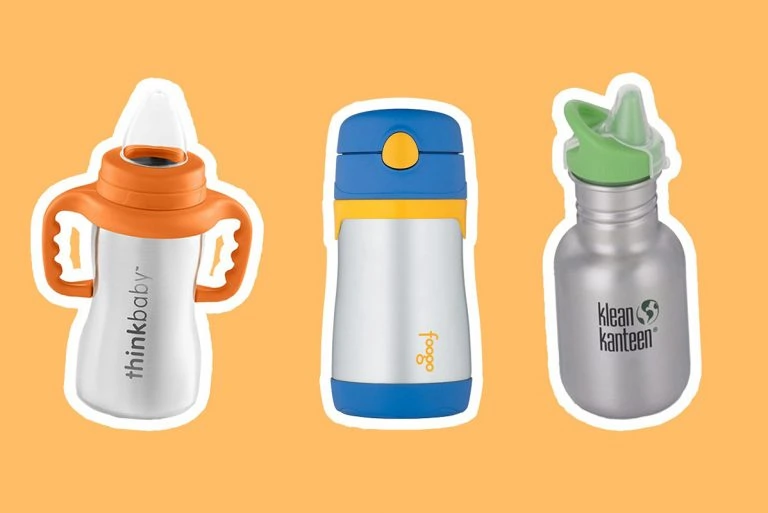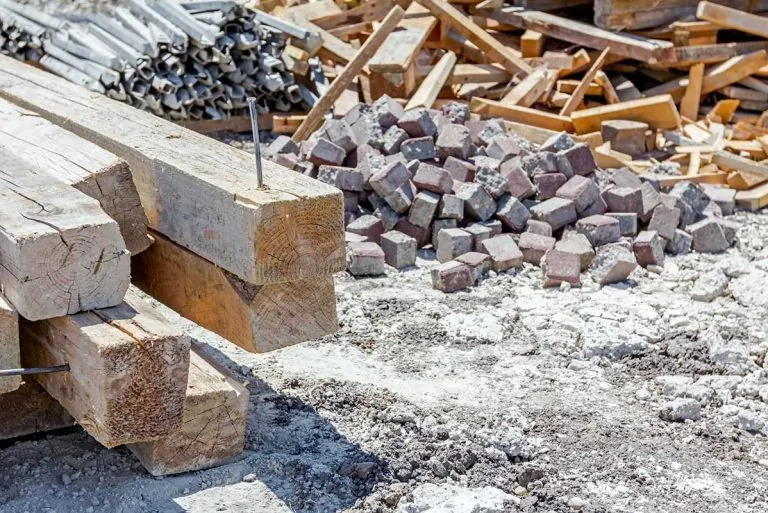Landfills are popping up everyone. These are some of the most important facts about landfills that you should know.
53 Important Facts About Landfills You Need to Know
Waste management is a critical issue that may be caused by human interaction with the environment. A growing population means a growing need for proper waste management.
Here we will highlight several statistics about waste management and landfills that you should know.
These statistics will help you make better decisions about how you approach the 3Rs of waste management and even living a zero-waste lifestyle.
What Are Landfills?
Landfills are sites or places set aside for waste materials disposal through burial. We can also refer to them as garbage dumps, rubbish dumps, or dumping ground among other names. Landfills are the earliest forms of waste disposal and treatment.
Traditionally, the waste would be left to decay or decompose by itself without being buried, but presently, the process involves burying the waste. Currently, these sites are also useful in the process of waste management, as they act as temporary waste consolidations and storage sites, before recycling.
There are numerous facts about landfills and pollution that we ought to learn.
More knowledge of these worrisome facts about landfills will help us become more environmentally friendly.
List of Important Waste Management And Landfill Statistics
Here are some of the most shocking statistics on waste management and landfills. Use these facts as a way to get smarter about your consumption.
- Only 5% of waste plastic gets recycling with the remaining portion ending up in landfills (3% of it ends up in oceans and rivers)
- If the United States converted all its non-recycled plastics into oil, each year the country would produce 5.7 billion gallons of transportation fuel
- In 2014, the class of plastics, including sacks, bags, and wraps cost 14.3$ to recycle.
- There are more than 2,000 landfills spread throughout the country, we are increasingly exposing our environment to pollution.
- Beneath this disguise that we put on landfills to make them look better, there consists toxins and greenhouse gases that are really dangerous. If we continue with this ignorance, future generations will have a lot on their plates to deal with in terms of health. Every emission from the landfills poses a great danger to the surroundings and its survival.
- American disposes of over 1,200 pounds of organic junk which they can easily compost by getting a container for an apartment composting or building a compost bin in the backyard.
We must take care of our environment to ensure that even the generations to come will have a place to call home. One thing we can do to guarantee this is through recycling. We should strive to recycle a higher percentage of our total wastes to ensure that less waste ends up in landfills.
Facts About Landfills And Recycling
- Statistics show that only one-tenth of the total waste produced in the US is recycled. The rest nine-tenths of the total solid waste goes to landfills.
- Despite all the efforts and campaigns to promote recycling, only 30% of the waste in the US goes to recycling centers. This is a very small amount considering that 75% of the waste we produce in the United States, is in fact, recyclable.
- When we recycle one plastic bottle, statistics show that we save enough energy that we can use to light a 10-watt bulb for around 4 hours. The recycling process will also create less air pollution by 20%, and 50% less in water pollution as compared to when producing a new bottle.
- Things like motor oil only get dirty and don’t wear out. Therefore, it’s economical and environmentally friendly to recycle it instead of disposing of it in landfills.
- The current rate of recycling in the US is about 34.5%. We should add more efforts to ensure that this number rises to around 75%, which can have a great positive impact on the environment. If this number would increase to the 75% mark, it will be as if we have removed 50 million passage vehicles from our roads.
More Facts On Waste Material Recycling
If we take more initiatives to protect waste materials, from reaching the landfills, we will be saving our future. It doesn’t matter whether these materials are compostable or not; all of them add to environmental pollution. Here are more facts about landfills and recycling.
- Top five cities that lead in recycling efforts in the US include San Francisco, CA at number one, followed by Boston, MA, and Chicago, IL, at number three. Denver, CO, and Portland hold number four and five, respectively.
- The first five countries that lead in recycling include Switzerland with 52%, Australia at 49.7%, and Germany at the third position with 48%. Netherlands and Norway hold number four and five, with 46% and 40% respectively.
- In every ten people, nine say they would participate in recycling if only it were an easier process.
- Research shows that in the United States, recyclable packaging and containers worth $11.4 billion is thrown away each year. All this amount ends in landfills, adding to our continued misery.
- Various studies indicate that on average, more women than men, are environmentally conscious. Therefore, women are more likely to do recycling, unlike most men.
- Recycling is way cheaper than disposing your waste into the landfills or even incinerating it.
Facts About Landfill And Pollution
- Gas emissions are one of the major environmental hazards that comes from landfills. These waste sites produce carbon dioxide and methane gases which both cause greenhouse effects in the atmosphere. Landfills also produce volatile organic compounds, although in small quantities, from organic materials decomposition by bacteria.
- Despite the fact that the landfills are well disguised, it doesn’t remove the fact that more and more greenhouse gases enter our atmosphere every single day.
- The incineration process generates dioxin, nitrogen compounds, and sulfur, furans, heavy metals like lead and mercury, as well as particulate matter.
- If during the process, the air mixture and temperature are not ideal, other multiple products are released. These include chlorinated hydrocarbons, aldehydes, polychlorinated dibenzodioxins, and more.
- The largest percentage of all soil pollution in the US comes from the landfills. They are one of the biggest sources of soil pollution. One interesting thing is that a large portion of the materials buried in landfills, around 80%, is recyclable.
- More than 11 million tons of shoes, clothing, as well as textiles, ends up in landfills. All these waste materials can be recycled instead of dumping them into landfills.
Facts About Plastic
- The energy necessary to produce 1.5 tons of plastic, is enough to provide power to around 250,000 homes.
- For an average plastic bottle to fully discompose, it will take an average of about 500 years. This is an eternity, based on the amount of plastic we dispose of every day.
- Research also shows that every hour, we dispose of 2.5 million plastic bottles. This number corresponds to around 42,000 bottles each minute. To curb this large disposal of plastics, there more and easier ways are being invented every day, to ensure that people embrace recycling.
- The process of recycling plastics will help us save two times the amount of energy necessary to burn it.
- More than 80% of the trash that causes harmful effects on the ocean comes from plastic waste.
- Plastics cause more than 100,000 marine animal deaths both from ingestion and entanglement.
- The University of Georgia conducted research that concluded that plastic trash amounting to 18 billion pounds, ends up in oceans each year.
- The quantity of plastic wrap we produce every year is enough to shrink-wrap, the whole state of Texas.
- Another different research shows that the oceans hold around 25 trillion fragments of plastic rubble. Around 269,000 tons of this wastes float on the oceans while 4 billion plastic pieces for every square kilometer, lay on the ocean floor.
- Approximately 65% of all household waste consists of packaging materials.
Paper Waste Facts
- Every year, Americans receive around 4 million tons of traditional mails. Majority of these paper mails, end up in the landfills.
- During American holidays and festive seasons, a further additional waste amounting to around 5 million tons is produced. Of this waste, approximately 4 million tons comprises of shopping bags and wrapping papers.
- The energy we use to produce and dispense junk mail in a single day can very well heat up to 250,000 households in the US.
- Businesses in the United States use an average of 21 million tons of waste paper annually.
- Every person in the US produces around 650 pounds of waste paper each year.
- An average person in the US uses approximately 500 pieces of disposable cups every year. A good part of these disposable cups ends up in the landfills. This continues to add up to the garbage menace in the country.
- Every year, Americans produce almost 400 billion photocopies. This translates to around 750,000 of paper copies per minute. At this rate, more waste continues to accumulate in the landfills.
Recycling of Paper Waste
- Just like recycling any other waste materials, it will take less energy to recycle paper, than producing new paper from trees.
- When we recycle paper, it means that we cut down fewer trees which is good for our environment. The more tree we have around, the more carbon dioxide they can remove from the atmosphere.
- An average of 390 gallons of oil is necessary to manufacture one tone of the paper. With recycling, we can reduce this amount significantly.
- One ton of recycled paper ensures that we save more than 350 gallons of oil. It also helps us to conserve 17 trees, as well as save landfill space.
- A single person in the United States uses an equivalent of two trees in paper form, each year.
- If we can recycle, 1/10 of all the American newspapers annually, we can manage to save more than 25 million trees.
Facts About Glass Waste
- If we dump glass waste in the landfills, it will take an average of 4,000 years to decompose completely. Recycling is the best thing to ensure that glass bottles and other glass waste, don’t end up in landfills.
- It is possible to infinitely recycle glass waste without a decrease in its quality or purity.
- Approximately 80% of all glass waste taken for recycling, undergoes a re-melting process to provide raw materials for new glass containers.
- Within the last 30 years, the weight of glass bottles has reduced by around 40%.
- The manufactures of glass products want to make sure that 50% of their total raw materials, will come from recycling glass waste. If they can do this, they will have saved enough power to cater to 21,978 households for a whole year. Also, they will be able to remove approximately 181 tons of glass waste, from landfills on a monthly basis.
Facts About Aluminum Waste
- Estimates show that Americans produce 65 billion of aluminum cans waste every year. However, unlike glass, aluminum is significantly recycled.
- Since aluminum is one of the most recycled items in the US, the aluminum waste that ends up in the landfills can only contribute to around 1% of the total waste.
- Similarly, to glass, we can recycle aluminum as many times as we can. It has no limit as it doesn’t change its composition in any way.
- The amount of energy we save by recycling just two cans of electricity is sufficient to power one computer for a whole day.
- After we recycle aluminum, we can re-purpose the new cans within 60 days.
- The amount of aluminum thrown out in the United States in just three months is enough to rebuild the county’s entire commercial air fleet.
- The energy we use to produce one new aluminum can, is enough to recycle 20 old cans into new ones.
Like these facts? See our interesting facts about electricity to continue your knowledge.
Conclusion On Facts About Landfills
From this article on facts about landfills, it is evident that landfills can cause more harm to the environment, than good.
Therefore, to ensure that minimal waste ends up in the landfills, it is a high time that we embrace recycling. This way, we can be able to preserve our environment for future generations.
How much are you doing to ensure less waste end up in landfills? Share with us in the comments.
Related Resources
- 6 Key Environmental Issues in Japan You Should Know
- How to Recycle Brita Filters (Safe & Eco-Friendly Tips to Consider)
- A Guide to Eco-Friendly Recycling
Green Coast is a renewable energy community solely focused on helping people better understand renewable energy technologies and the environment.












